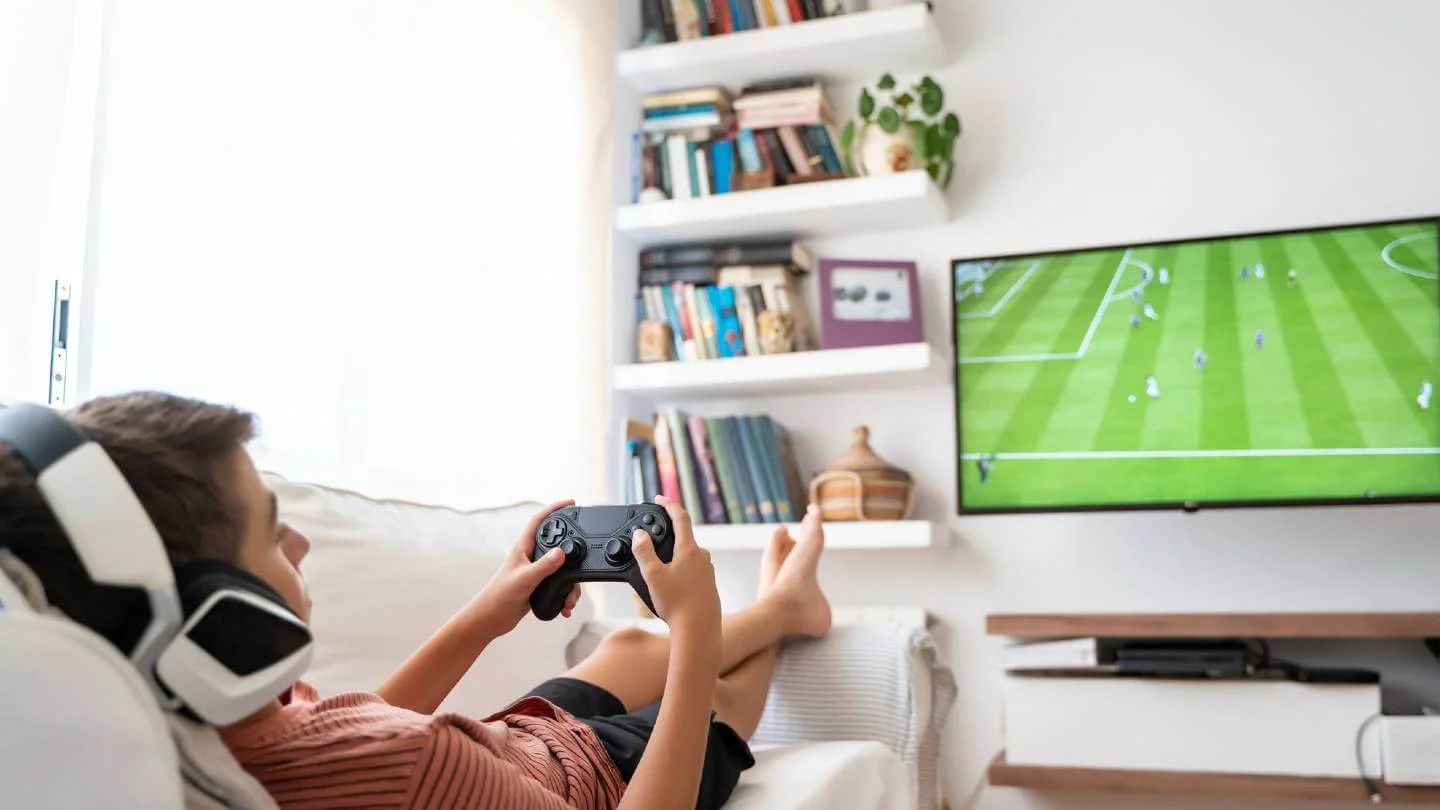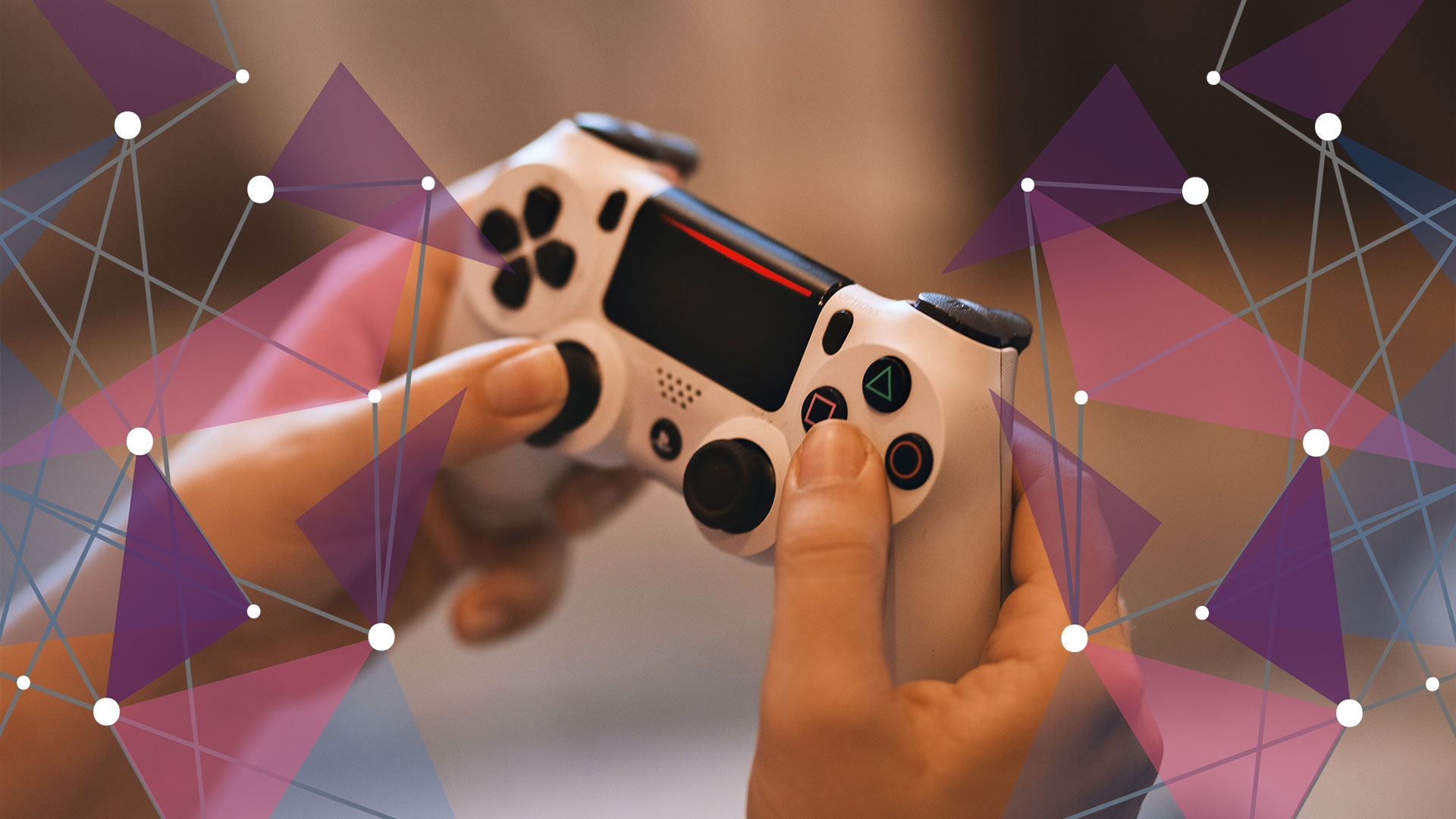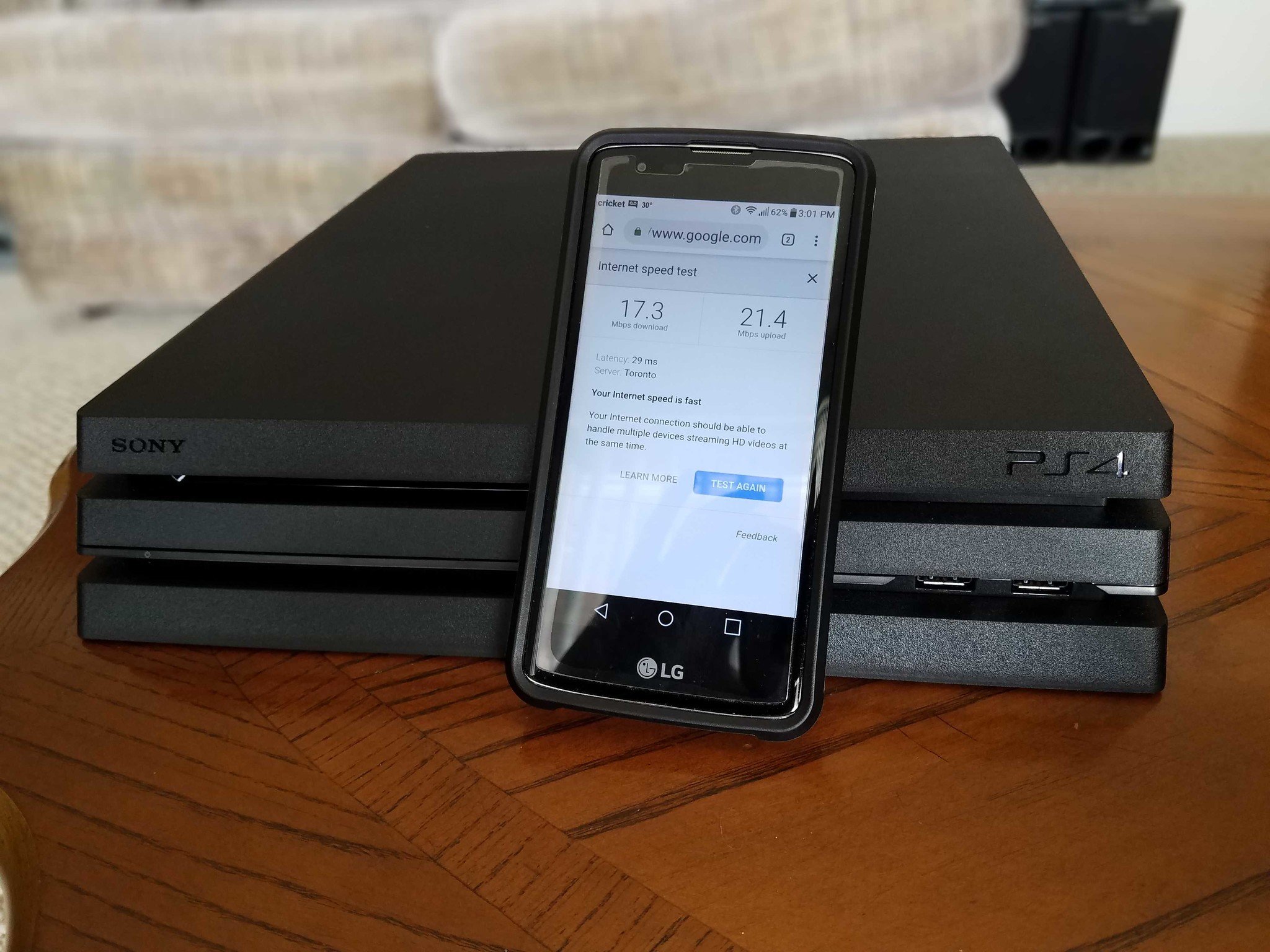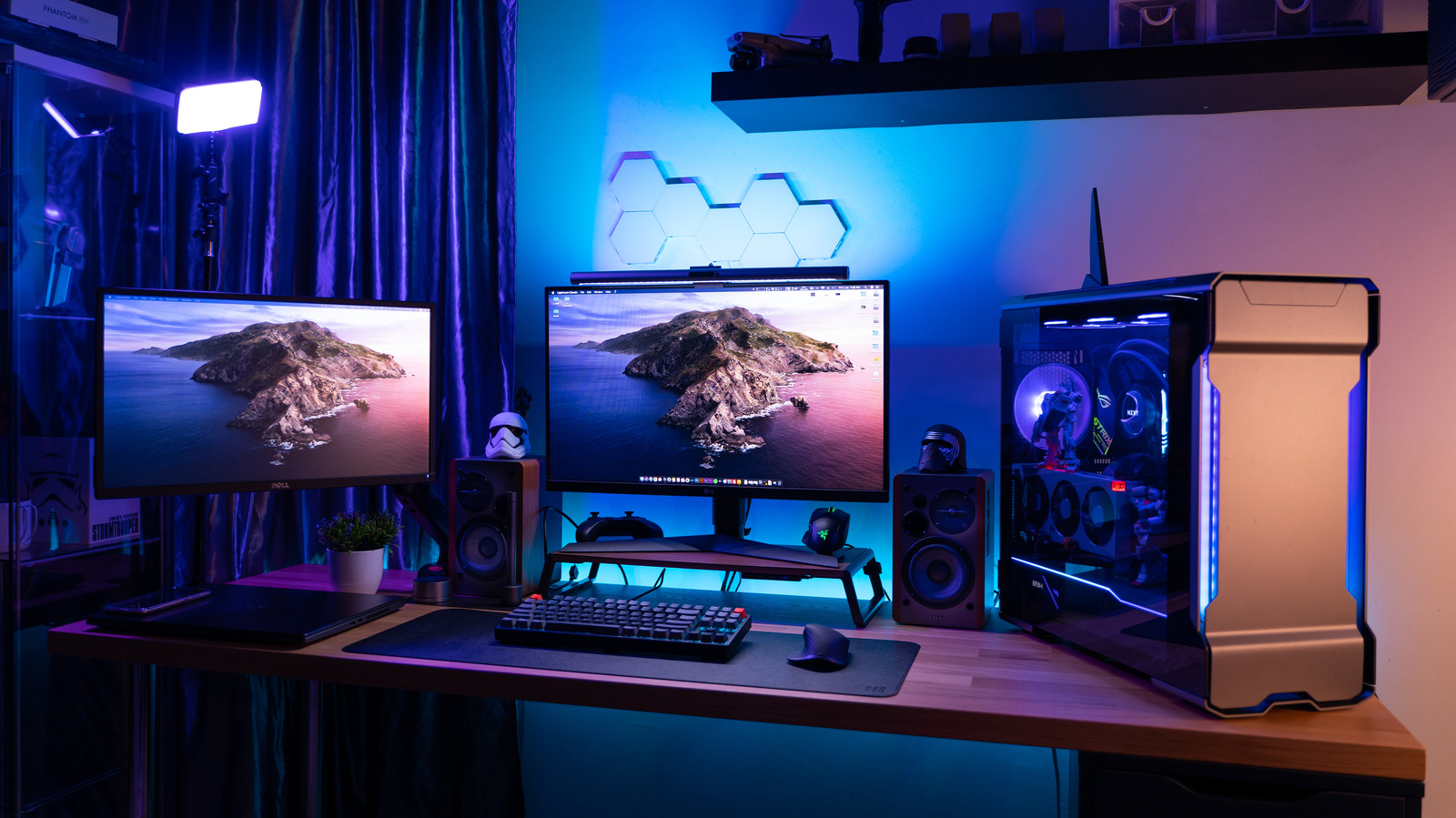Introduction
In the fast-paced world of online gaming, nothing is more frustrating than experiencing lag. Lag refers to the delay or latency between a player’s action and its subsequent response in the game, resulting in a less than optimal gaming experience. Whether you’re battling opponents in a first-person shooter or exploring vast virtual worlds in a role-playing game, lag can significantly impact your ability to compete and enjoy the game to its fullest.
Understanding the causes of lag in online gaming is crucial for both gamers and game developers. By identifying and addressing these factors, it is possible to minimize lag and create a more seamless gameplay experience for players across the globe.
This article will delve into the various factors that contribute to lag in online gaming and explore possible solutions to reduce its impact. From internet connection speeds and network congestion to server performance and game optimization, we will examine the most common culprits and provide practical tips for optimizing your gaming setup.
Latency and Online Gaming
Latency, also known as ping, is a measure of the time it takes for data from a player’s device to reach the game server and for the server’s response to be received. In online gaming, low latency is crucial for real-time interactions and quick response times. A delay of just a few milliseconds can make a significant difference in competitive multiplayer games.
Latency is influenced by various factors, including the player’s internet connection, geographic distance between the player and the game server, network congestion, and the performance of the server itself. Understanding these factors is essential in addressing and minimizing latency issues.
High latency can cause a range of problems in online gaming. Gameplay may feel sluggish, with a noticeable delay between actions and their impacts in the game world. This lag can lead to frustration for players, especially in fast-paced games where split-second decisions can determine success or failure.
Furthermore, high latency can result in instances of rubber-banding, where a player’s character gets pulled back to a previous position due to the discrepancy between the player’s actions and the server’s response. This can be highly disruptive to gameplay and make online gaming virtually unplayable.
To deliver a smooth and enjoyable gaming experience, it is crucial to understand and address the factors contributing to latency in online gaming. In the following sections, we will explore these factors in more detail and discuss potential solutions for reducing lag.
Factors Contributing to Lag
Lag in online gaming can be attributed to several factors, each playing a role in the overall latency experienced by players. Understanding these factors can help identify the root cause of lag and determine the most effective solution for reducing it. Let’s explore some of the main culprits:
- Internet Connection Speed: A slow internet connection can significantly contribute to lag in online gaming. Insufficient bandwidth and high latency can result in delayed data transmission, causing gameplay to feel sluggish and unresponsive.
- Distance: The physical distance between the player and the game server can impact latency. The farther the distance, the longer it takes for data packets to travel back and forth, leading to increased latency.
- Network Congestion: Network congestion occurs when there is a high volume of data traffic on the network. This can lead to increased latency as data packets compete for limited bandwidth, causing delays in transmission and response times.
- Hardware Limitations: Outdated or underperforming hardware, such as routers, modems, or graphics cards, can contribute to lag in online gaming. Inadequate processing power and outdated firmware can result in slower data processing and slower response times.
- Server Performance: The performance of the game server itself plays a crucial role in the overall gaming experience. Overloaded or underperforming servers can lead to increased latency, as they struggle to handle the demands of multiple players simultaneously.
- Inadequate Game Optimization: Some games may suffer from poor optimization, resulting in increased lag. This can be due to inefficient coding, excessive resource usage, or lack of optimization for different hardware configurations.
By addressing these factors, gamers and game developers can work towards minimizing lag and providing a smoother gaming experience. In the next section, we will discuss practical solutions to reduce lag in online gaming.
Internet Connection Speed
One of the main factors contributing to lag in online gaming is the speed of your internet connection. A slow connection can result in delays in data transmission, leading to increased latency and a poor gaming experience. Here are some considerations to improve your internet connection speed:
- Upgrade your internet plan: Contact your internet service provider and inquire about higher-speed plans. Upgrading to a plan with faster download and upload speeds can significantly reduce latency and improve your overall gaming experience.
- Switch to a wired connection: While Wi-Fi offers convenience, a wired Ethernet connection typically provides a more stable and reliable connection. If possible, connect your gaming device directly to the router using an Ethernet cable to minimize signal interference and reduce latency.
- Optimize your network: Ensure that your network is optimized for gaming by minimizing bandwidth usage on other devices. Close bandwidth-hogging applications and downloads running in the background while gaming to allocate maximum bandwidth to your gaming device.
- Utilize Quality of Service (QoS) settings: Many routers offer QoS settings that prioritize traffic for specific devices or applications, such as gaming. Enable QoS and set the priority for your gaming device to ensure it receives dedicated and uninterrupted bandwidth during gameplay.
- Consider a network booster: If your gaming device is far from the router or you experience weak Wi-Fi signals, consider investing in a network booster or Wi-Fi extender. These devices can enhance the signal strength and coverage throughout your home, reducing latency caused by distance or weak signals.
By taking these measures to improve your internet connection speed, you can minimize lag and enjoy a smoother and more responsive gaming experience. In the next section, we will explore the impact of geographic distance on latency in online gaming.
Distance
The physical distance between your location and the game server can have a significant impact on latency in online gaming. As data packets travel back and forth between your device and the server, the longer the distance, the more time it takes for the information to make the round trip. Here are some strategies to address the issue of distance:
- Choose servers closer to your location: Many online games offer multiple server locations. When selecting a server to connect to, opt for one that is geographically closer to your physical location. Choosing a server in close proximity can reduce the overall distance that data packets need to travel, thereby minimizing latency.
- Consider a Virtual Private Network (VPN): Using a VPN can sometimes improve your online gaming experience, particularly if the game server is in a different region. A VPN can route your traffic through a server closer to the game’s server, reducing the physical distance and potentially lowering latency.
- Participate in local gaming communities: Joining local gaming communities or forums can help you find games hosted on servers located in your region. Playing on local servers can significantly reduce distance-related latency and provide a smoother gaming experience.
While distance is a challenge beyond our control, selecting closer servers and exploring VPN options can help mitigate its impact on latency. In the next section, we will discuss how network congestion can contribute to lag in online gaming.
Network Congestion
Network congestion occurs when there is a high volume of data traffic on your internet connection or the network infrastructure. This can lead to increased latency and lag in online gaming. Fortunately, there are several measures you can take to minimize the impact of network congestion:
- Play during off-peak hours: Network congestion is typically highest during peak hours when more people are using the internet. To avoid congestion, try playing online games during off-peak hours when fewer users are actively using the network.
- Close bandwidth-intensive applications: Bandwidth-intensive applications such as streaming services, file downloads, or cloud backup services can consume a significant portion of your internet bandwidth and contribute to network congestion. Closing these applications while gaming can free up bandwidth for smoother gameplay.
- Enable Quality of Service (QoS) on your router: Quality of Service (QoS) settings on your router allow you to prioritize specific types of traffic, such as gaming, over other less time-sensitive traffic. Enable QoS and configure it to prioritize your gaming device, ensuring a smoother gaming experience even during times of network congestion.
- Upgrade your internet plan: If network congestion is a recurring issue, it may be worthwhile to upgrade your internet plan to one with higher bandwidth capacity. A higher plan can handle increased traffic and reduce the impact of congestion on your gaming experience.
- Consider a wired connection: Using a wired Ethernet connection, rather than relying on Wi-Fi, can help reduce the effects of network congestion. Wired connections tend to be more stable and less prone to interference, resulting in better performance, especially during times of heavy network usage.
By implementing these strategies, you can minimize the impact of network congestion and enjoy smoother online gaming sessions. In the next section, we will explore the role of hardware limitations in lag during online gaming.
Hardware Limitations
The hardware you use to connect to the internet and play games can have a significant impact on latency and overall gaming performance. Outdated or underperforming hardware can contribute to lag in online gaming. Here are some considerations to address hardware limitations:
- Upgrade your router or modem: Older routers or modems may struggle to handle the demands of modern online gaming, resulting in increased latency. Consider upgrading to a newer model with better performance and improved features.
- Optimize your network equipment: Make sure your router’s firmware is up to date and optimized for gaming. Consult the manufacturer’s website or support documentation for firmware updates and recommended settings specific to gaming.
- Upgrade your graphics card: A graphics card that is not powerful enough to handle the demands of a particular game can lead to lag and decreased performance. Upgrading to a higher-end graphics card can improve both visuals and gameplay smoothness.
- Upgrade your gaming device: If you’re playing on a console or a gaming PC, outdated hardware may be a limiting factor for optimal gaming performance. Consider upgrading to a newer model with more processing power and better graphics capabilities.
- Ensure proper cooling: Overheating can cause hardware to throttle and underperform, leading to lag and decreased gaming performance. Make sure your gaming device, including the CPU and graphics card, is properly cooled and free from dust to maintain optimal performance.
By addressing hardware limitations, you can ensure that your gaming setup is capable of delivering a smooth and responsive gaming experience. In the next section, we will discuss the importance of game optimization in reducing lag in online gaming.
Server Performance
The performance of the game server you connect to also plays a crucial role in the overall lag experienced during online gaming. If the server is overloaded or underperforming, it can lead to increased latency and a poor gaming experience. Here are some factors to consider regarding server performance:
- Choose reputable game servers: When selecting an online game to play, opt for games that are hosted on reputable servers. These servers are typically better equipped to handle a large number of players and provide a more stable and smooth gaming experience.
- Check server status: Before jumping into a multiplayer game, check the server status. If the server is experiencing high latency or is overcrowded, consider choosing a different server or returning to the game at a less busy time.
- Report server issues: If you consistently experience lag on a specific game server, be sure to report the issue to the game developers. They can investigate and potentially resolve any performance issues or server-related problems.
- Consider private servers: Some games offer the option to play on private servers. These servers are often managed by dedicated communities or groups and are known for their better performance and reduced lag compared to public servers.
- Stay updated with game patches and updates: Game developers often release patches and updates to address performance issues and optimize server performance. Make sure to keep your game up to date to benefit from these improvements.
By paying attention to the performance of game servers and choosing reputable ones, you can optimize your online gaming experience and minimize the impact of server-related lag. In the next section, we will explore the importance of game optimization in reducing lag.
Inadequate Game Optimization
Inadequate game optimization can also contribute to lag in online gaming. If a game is not properly optimized, it can put a strain on your system resources and result in decreased performance. Here are some factors to consider regarding game optimization:
- Check minimum system requirements: Before playing a game, ensure that your system meets the minimum requirements. Running a game on hardware that does not meet the game’s specifications can lead to lag and poor performance.
- Update your game: Game developers often release updates and patches to address performance issues and optimize gameplay. Make sure to keep your game updated to benefit from these improvements and fixes.
- Adjust in-game settings: Many games allow you to adjust various graphics and performance settings. Experiment with lowering the graphics settings or disabling resource-intensive features to reduce the strain on your system and improve overall performance.
- Disable background processes: Before launching a game, close any unnecessary applications and processes running in the background. Resource-hungry applications can consume system resources, causing lag in the game.
- Update device drivers: Outdated or incompatible device drivers can lead to performance issues in games. Make sure to keep your graphics card drivers, sound card drivers, and other essential drivers up to date to ensure optimal performance.
By optimizing the game settings and ensuring that your system meets the game’s requirements, you can enhance game performance and reduce lag. In the next section, we will discuss practical solutions to reduce lag in online gaming.
Ways to Reduce Lag in Online Gaming
Lag can greatly hinder your online gaming experience, but there are several practical steps you can take to minimize its impact and enjoy smoother gameplay. Here are some effective ways to reduce lag:
- Upgrade your internet connection: Consider upgrading to a faster internet plan with higher download and upload speeds to reduce latency.
- Choose servers closer to your location: Connect to game servers that are geographically closer to minimize the distance data packets need to travel.
- Reduce network traffic: Close bandwidth-intensive applications, enable QoS settings on your router, and play during off-peak hours to avoid congestion.
- Upgrade your hardware: Upgrade your router, modem, graphics card, or other hardware components to ensure smoother gameplay.
- Optimize game settings: Adjust in-game graphics and performance settings, keep the game updated, and disable background processes to reduce strain on your system.
- Report server issues: If you experience consistent lag on a specific game server, report the issue to the game developers for investigation and potential resolution.
- Consider private servers: Private servers may offer better performance and reduced lag compared to overcrowded public servers.
- Stay updated: Keep your game and device drivers up to date to benefit from performance improvements and fixes.
Keep in mind that each game and gaming setup is unique, so you may need to experiment with different combinations of these solutions to find what works best for you. Remember to regularly monitor and optimize your gaming setup to ensure a smooth and enjoyable online gaming experience.
Upgrade Internet Connection
One of the most effective ways to reduce lag in online gaming is to upgrade your internet connection. A faster and more reliable connection can significantly improve latency, allowing for a smoother and more responsive gameplay experience. Here are some steps to consider when upgrading your internet connection:
- Contact your internet service provider: Reach out to your internet service provider (ISP) to inquire about higher-speed plans. They can provide information about available options and upgrade packages that suit your needs.
- Consider fiber optic or cable internet: Fiber optic and cable internet connections offer faster speeds compared to DSL or satellite connections. If available in your area, upgrading to these technologies can provide a substantial boost in your internet speed and reduce lag.
- Assess your current bandwidth: Determine whether your current internet plan is suitable for online gaming. Higher bandwidth plans typically offer more capacity for data transfer, resulting in reduced latency. Evaluate your usage patterns and consider upgrading if your current plan falls short.
- Check for data caps and fair usage policies: Some internet plans impose data caps or fair usage policies, which can throttle your speed after reaching a certain limit. Ensure that your chosen plan provides unlimited or sufficiently high data allowances to avoid speed restrictions.
- Switch to a wired connection: While Wi-Fi provides convenience, a wired Ethernet connection generally offers more stability and reliability. If your gaming device and router are in close proximity, connecting them directly with an Ethernet cable can ensure faster and more consistent speeds.
- Perform regular speed tests: Use online speed testing tools to regularly check your internet speed. This will help you identify any discrepancies between the advertised and actual speeds provided by your ISP.
By upgrading your internet connection and selecting a plan that meets your gaming needs, you can significantly reduce lag in online gaming and enjoy a seamless gaming experience. Remember to assess your options, compare plans, and choose the best upgrade for your specific requirements.
Choose Closer Servers
The physical distance between your location and the game server can have a direct impact on the latency and overall performance in online gaming. Selecting servers closer to your geographic location can help minimize the distance data packets need to travel, resulting in reduced lag. Here are some steps to consider when choosing closer servers:
- Explore server location options: Many online games offer multiple server locations. Take advantage of this feature and select servers that are geographically closer to your physical location.
- Consider latency indicators: Some games provide latency indicators or ping values for each server, indicating the expected connection quality. Choose servers with lower latency values as they tend to offer better overall performance.
- Join local gaming communities: Engage with local gaming communities or forums to discover games hosted on servers located in your region. These servers are often optimized for low latency connections within the local network infrastructure.
- Utilize server browser tools: Use server browser tools or external websites to search for servers based on location. These tools provide valuable information such as server population, ping values, and location distance to help you make an informed decision.
- Consider the game mode: Some game modes, such as competitive or ranked matches, may have stricter matchmaking criteria that prioritize servers with lower latency. Opt for these game modes when choosing servers for the best gaming experience.
By selecting closer servers, you can significantly reduce the distance that data packets must travel, resulting in lower latency and a more responsive online gaming experience. Keep in mind that server availability and performance may vary, so experiment with different server options to find the optimal balance between low latency and server stability.
Reduce Network Traffic
Network congestion can contribute to lag in online gaming, as data packets compete for limited bandwidth. To reduce network traffic and improve your gaming experience, consider implementing the following strategies:
- Close bandwidth-intensive applications: Bandwidth-hogging applications such as streaming services, file downloads, or cloud backups can consume a significant portion of your internet bandwidth. Close these applications while gaming to free up bandwidth and reduce network congestion.
- Enable Quality of Service (QoS) settings: Many routers offer QoS settings that allow you to prioritize specific types of network traffic. Enable QoS and configure it to prioritize gaming traffic, ensuring that it receives dedicated bandwidth over other less time-sensitive applications.
- Play during off-peak hours: Network congestion is typically highest during peak hours when more people are using the internet. Consider adjusting your gaming schedule to play during off-peak hours when network traffic is lighter and less congested.
- Limit the number of connected devices: If possible, reduce the number of devices connected to your network while gaming. Each connected device consumes a portion of your available bandwidth, so minimizing the number of connected devices can help reduce network congestion.
- Optimize your Wi-Fi connection: If you’re using Wi-Fi to connect to your network, optimize your connection by placing your router in a central location, away from obstructions, and minimizing interference from other wireless devices.
By reducing network traffic and prioritizing gaming traffic, you can alleviate congestion on your network and ensure that your gaming data receives the necessary bandwidth for a smoother online gaming experience.
Upgrade Hardware
Upgrading your hardware can significantly improve your gaming performance and help reduce lag in online gaming. Outdated or underperforming hardware can bottleneck your system’s capabilities, leading to decreased responsiveness and increased latency. Here are some areas to consider when upgrading your hardware:
- Processor (CPU): A faster and more powerful CPU can handle the processing demands of modern games, resulting in smoother gameplay and reduced lag. Consider upgrading to a newer CPU with higher clock speeds and more cores.
- Graphics card (GPU): The GPU plays a crucial role in rendering graphics and textures in games. Upgrading to a more powerful graphics card can improve visual quality and enhance overall gaming performance.
- Memory (RAM): Sufficient RAM is essential for running games smoothly. Upgrading to higher capacity RAM can prevent system slowdowns and reduce the likelihood of lag caused by insufficient memory.
- Storage: Consider upgrading to a solid-state drive (SSD) for faster loading times and improved game performance. SSDs offer quicker data access speeds compared to traditional hard disk drives (HDDs), reducing lag caused by slow storage response times.
- Network hardware: Investing in a high-performance router and network adapter can improve your internet connection stability and reduce latency. Look for routers with features such as beamforming and dual-band capabilities for optimal gaming performance.
When upgrading hardware, it’s important to ensure compatibility with your existing system components. Research thoroughly, seek recommendations, and consult specialists if needed to ensure a smooth upgrade process. By upgrading your hardware, you can enhance your system’s capabilities and reduce lag, resulting in a more enjoyable online gaming experience.
Optimize Game Settings
Optimizing game settings can make a significant difference in reducing lag and improving overall gaming performance. By adjusting various graphics and performance settings, you can optimize your game to run more smoothly on your hardware. Here are some tips to help you optimize game settings:
- Graphics settings: Lower graphics settings such as texture quality, shadow resolution, and anti-aliasing can significantly reduce the strain on your GPU and improve overall performance. Experiment with different settings to find the right balance between visual quality and performance.
- Resolution: Lowering the resolution can relieve the burden on your graphics card and lead to smoother gameplay. Consider reducing the resolution slightly if your system struggles to maintain a steady frame rate.
- Disable unnecessary effects: Some games include additional visual effects that can be taxing on your system. Turn off or reduce settings such as motion blur, depth of field, or ambient occlusion to improve performance.
- Monitor the frame rate: Enable the display of your game’s frame rate to monitor its performance. If the frame rate fluctuates or drops too low, adjust your settings accordingly to optimize performance.
- Update the game: Developers often release patches and updates to improve game performance and optimize settings. Make sure your game is up to date to benefit from these enhancements.
- Disable background processes: Close any unnecessary applications or processes running in the background that can consume system resources, such as web browsers, chat clients, or music players.
- Monitor system temperature: Overheating can lead to performance throttling and increased lag. Monitor your system’s temperature and consider improving cooling with additional fans or a better cooling solution if necessary.
Each game may have different settings and optimizations available, so explore the options within the game’s settings menu and experiment to find the best combination of performance and visual quality. By optimizing game settings, you can maximize your system’s capabilities and minimize lag during online gaming.
Conclusion
Lag in online gaming can be a frustrating experience, but by understanding the factors that contribute to lag and implementing the right strategies, you can significantly improve your gaming performance. Upgrading your internet connection, choosing closer servers, reducing network traffic, upgrading hardware, optimizing game settings, and considering adequate game optimization are all effective ways to reduce lag and enjoy a smoother online gaming experience.
It is crucial to assess your specific gaming setup, taking into account factors such as internet capabilities, hardware specifications, and game optimization options. Experiment with different solutions and find the combination that works best for you.
Remember to regularly monitor and update your hardware, drivers, and game software to ensure optimal performance. Stay connected with gaming communities and forums to learn about the latest tips and tricks for reducing lag in specific games.
By implementing the strategies mentioned in this article, you can minimize lag, improve responsiveness, and ultimately enhance your overall enjoyment of online gaming. So, level up your gaming experience by taking the necessary steps to reduce lag and achieve a seamless and immersive gaming journey!

























